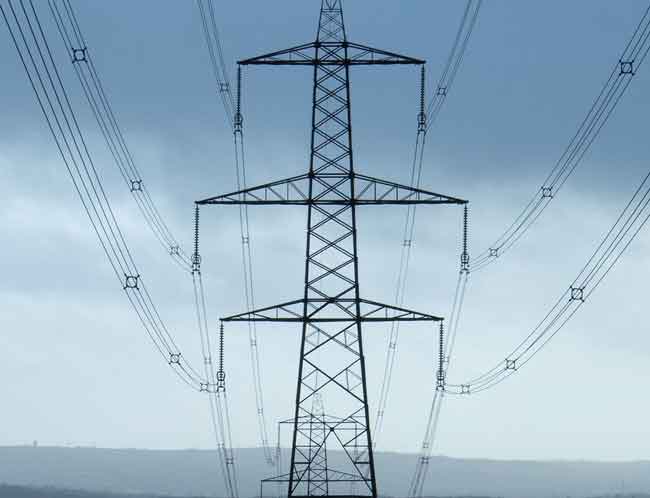Some realistic advice on how to go solar
LUMSDEN, SASKATCHEWAN - Will Odie knows that when his phone rings, he will likely have some explaining to do. Odie works at Kelln Solar in Lumsden, Saskatchewan, one of the first companies in the province to offer solar energy technology more than 20 years ago.
"I get calls all the time from people saying 'I want to solarize my house.' I don't know if that's a word in the English language yet, but it's pretty common usage," said Odie. "Their first thought is solar electric."
But Odie has other options he'd suggest. He wants to encourage their interest in this clean and renewable energy source for their homes, but solar electricity and the size of the photovoltaic systems needed to produce it are not what he would have homeowners invest in first.
When Odie explains that producing solar electricity costs about $7 per watt per solar panel — and when one considers a 60-watt light bulb uses 60 watts per hour — callers are surprised. When Odie tells them the average household uses about 25,000 kilowatts per day, that surprise turns to shock. Paying upwards of $40,000 to $60,000 to power their home with solar electricity (if it's not connected to a utility's power grid) is not what they had in mind.
Odie would suggest less expensive and more efficient alternatives. For instance, while solar water heaters aren't inexpensive at $5,000 to $7,000 installed in one's home, Odie said government programs, such the federal government's ecoENERGY retrofit program for homeowners, as well as provincial ones where offered, can help.
The systems pay for themselves in seven to 10 years, Odie explains. When such a system is used to heat pool water, he said the payback is even faster.
There are also solar space-heating systems, but Odie would start with water since it is used year-round while heat is only needed in winter.
But even before considering this technology, Odie thinks more Canadians need to think about how and where their homes are built.
"The most cost-effective way of using solar is passive solar," Odie says. This includes building better houses, and orienting them so that many of the windows face and an expanse of roof face south for maximum sun exposure. That way, he says, "if you aren't adding active solar systems now, you can add them later."
"As individuals, there are decisions we can make that still have an impact in our lives," said Odie.
When building his new home in Regina, these are things Rolf Holzkaemper considered and implemented. His house was designed to actively and passively use solar energy. Beyond his south-facing back wall with windows and panels covering it and the entire brick exterior, his house doesn't look much different from those of his neighbours.
On the back wall, the centre row of panels have glycol running through them. It passes into his basement, where the heat is used to warm the family's water. That warm water is used, in part, for space heating. Water goes through a fan coil unit (which replaces the need for a furnace) where air is blown over the coil and then through the duct work in the bungalow.
The windows in the back of the house are double-paned with a particular glaze to allow more heat in, while windows in other parts of the house are triple-paned to hold heat. In fact, the systems in his home produce enough heat that he can use the excess to warm his garage and even his sidewalks and driveway.
"When you think of all the energy around us that we always let pass by while we find other ways to get our energy, it seems like a waste," said Holzkaemper, who spent six months designing his home and another 11 building it before moving in this May.
Although solar electricity is expensive, it's where Elizabeth McDonald of the Canadian Solar Industries Association would have many more Canadians getting more of their power.
Ontario has an incentive offering 42 cents per kilowatt to those who produce solar electricity to the power grid while the federal government provides one cent per kilowatt for up to 10 years under its ecoENERGY for Renewable Power program.
But more government funding would help Canadians pay for solar electricity technology and build the industry, said McDonald. The financial costs are high, but McDonald believes it's a valuable investment in helping to protect the environment and provide more energy security.
"The biggest savings we're talking about is our environment and where we're going," said McDonald.
Jeff Knapp, Natural Resources Canada's "solar chap," explains why the federal government is focused on solar heating. There are significant environmental benefits to solar electricity, such as reducing the need to expand power generation facilities and grids, he said.
But to get Canadians to embrace solar as a source of energy, he agrees with Odie that solar heating is the place to start.
"If you put in a solar water heating system, that investment will pay you back in — depending on the project and how much work you're able to do yourself — anywhere from five to 15 years," said Knapp. "We're looking at a return on investment somewhere between seven and 18 per cent.
"On the best end of it, it's like a good mutual fund and at the worst end of it, it's like a reasonable mutual fund."
As for solar electricity, with the high cost of the technology needed to produce it and the low cost of electricity provided by utilities, especially in British Columbia, Manitoba and Quebec, the financial payback is longer than many lifetimes.
"I'm saying economically — which is unfortunately the way we default as human beings — the payback on that might be 200 years," said Knapp, who said the payback period is shorter in places like Saskatchewan, Ontario and the eastern provinces, where electricity costs more.
What excites him is the new ecoENERGY for Renewable Heat pilot program that offers incentives to utilities, builders, municipalities and others to install solar water and air heating systems. Those submitting proposals to receive up to a 25 per- cent rebate to a maximum of $2 million must be installing the systems in at least 200 buildings.
"Our market in Canada has never seen the kind of demand that this could potentially represent," said Knapp.
Related News

Is Hydrogen The Future For Power Companies?
LONDON - Last month, the European Union set out a comprehensive hydrogen strategy as part of its goal to achieve carbon neutrality for all its industries by 2050. The EU has an ambitious target to build out at least 40 gigawatts of electrolyzers within its borders by 2030 and also support the development of another 40 gigawatts of green hydrogen in nearby countries that can export to the region by the same date. The announcement came as little surprise, given that Europe is regarded as being far ahead of the United States in the shift to renewable energy.
But the hydrogen…




